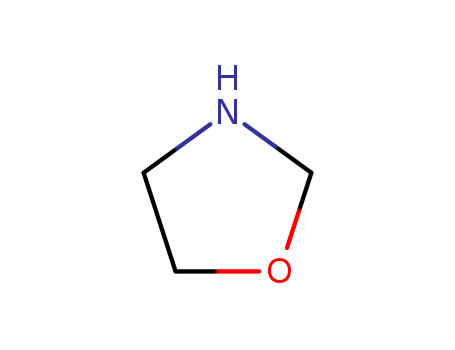10.1039/b003789n
The research focuses on synthesizing and analyzing the conformational behavior of an eight-membered lactam dipeptide. The purpose was to study self-recognition and dimerization in cis-disubstituted medium-ring lactam dipeptides as a part of designing β-turn mimetics. The synthesis involved 12 steps starting from L-serine-derived compounds, yielding the dipeptide with a semi-extended conformation capable of head-to-tail dimerization (Kdim ~ 100 dm3/mol in CDCl2CDCl2). Conformational analyses using NMR, IR, and vapour pressure osmometry revealed strong intermolecular interactions. Chemicals used included L-serine-derived oxazolidines, dibutyltin oxide, di-tert-butyl dicarbonate, and diphenylphosphoryl azide, among others.
10.1016/S0040-4039(00)96868-0
This study investigates the reactions of secondary α-amino acids with carbonyl compounds, focusing on the properties of the intermediate methylene ylides and their products. Cyclic secondary α-amino acids react with aldehydes bearing electron-withdrawing substituents to form oxazolidines via anti-dipoles. In some cases, structural features of the α-amino acid promote a 1,4-proton transfer process in the intermediate methylene ylides, leading to the formation of Z-pyrrolines. When ninhydrin is used as the carbonyl component, stable methylene ylides can be formed under favorable circumstances. This study explores factors that influence the reaction pathways, including the structures of the secondary α-amino acids and carbonyl compounds, and shows that these reactions can lead to a variety of products, such as oxazolidines, pyrrolines, and stable methylene ylides, which can undergo further cycloaddition reactions.
10.1021/acs.joc.5b00064
The study presents the first stereoselective synthesis of four unusual N-acylated monosaccharides (compounds 5–8) that are fragments of lipooligosaccharide IV (LOS-IV) from Mycobacterium marinum. These monosaccharides are essential for the bioactivity of LOS-IV and feature a highly substituted ?-lactam connected to a 4-amino-4,6-dideoxy-a-D-galactopyranoside moiety. The synthesis involves the preparation of key lactam intermediates through substrate-controlled asymmetric cyclization and functional group transformations. Compound 9, an 8-azidooctyl 4-amino-4,6-dideoxy-a-D-galactopyranoside derivative, serves as a common precursor for the final targets. The lactam intermediates are synthesized via two approaches: one involves the construction of a bicyclic oxazolidine–pyrrolinone ring system (11) through cyclization of an amino acid derived oxazolidine (12), while the other uses a cascade oxidation–cyclization–oxidation sequence to produce lactam 15 from an amino alcohol derived from 3-butynol. The final targets (5–8) are obtained by coupling these lactam intermediates with compound 9 and subsequent deprotection steps. The synthesized compounds are expected to be useful for future investigations into the biological functions of LOS-IV and can be conjugated to proteins for generating monoclonal antibodies.





